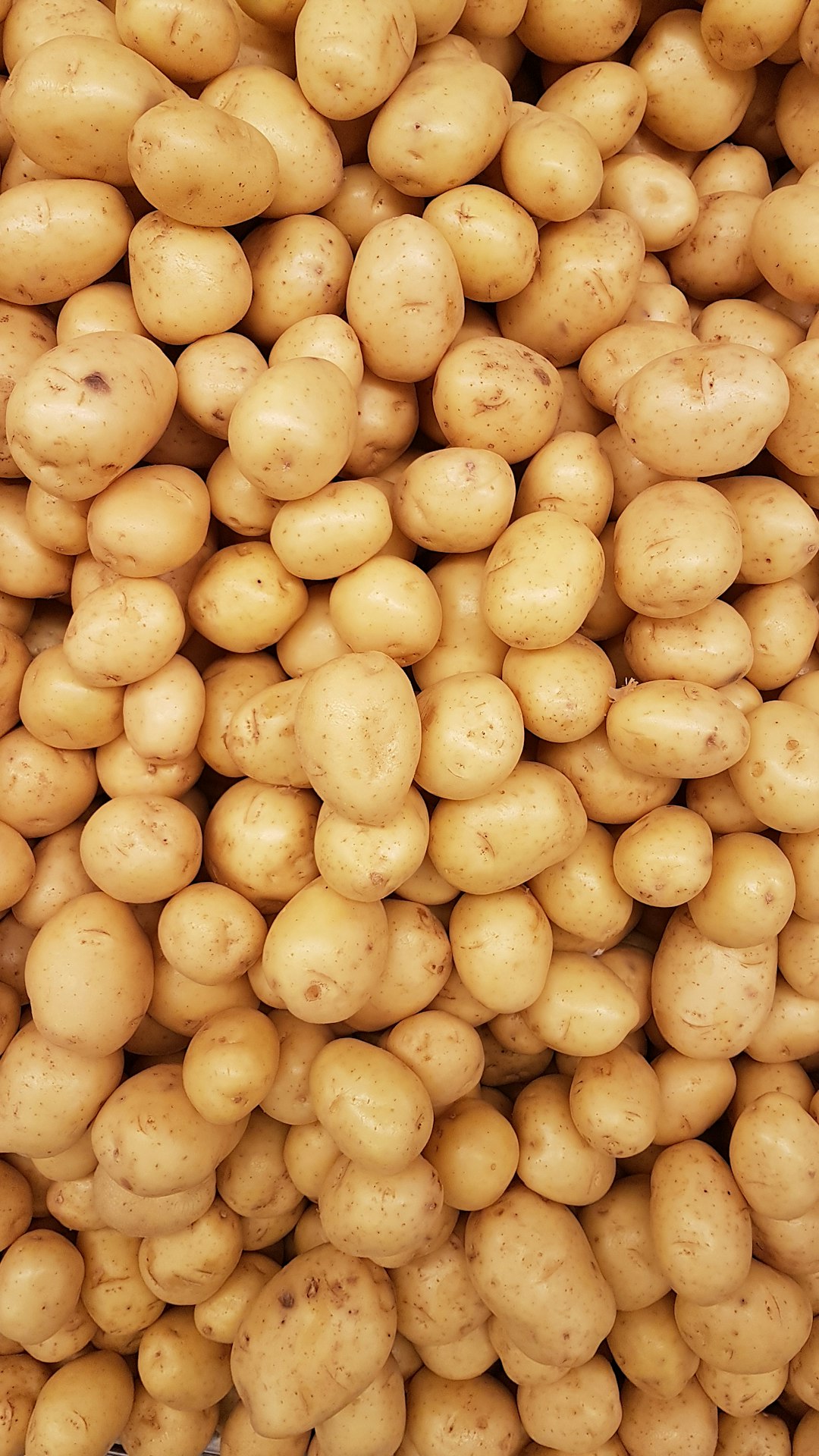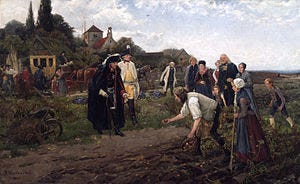The poor benighted potato. It’s too often treated dismissively as a cheap stomach filler, or supporting cast to the main event of meat or fish. Yet in winter, is there anything more comforting than a baked potato, its skin crisped to a shattering and interior fluffed up with an excess of butter? Eat it the American way with crumbs of bacon, chopped onion, and sour cream instead of butter, and you have a meal fit for angels.
Now the new season’s potatoes are coming in, there is hardly a more seductive cheap treat than tiny Jersey Royals, or new Yukon Golds, or Rattes and other fingerlings, boiled or steamed with good-quality cold butter melting over them like a climate-crisis icecap and a ferocious grinding of black pepper.

The spud doesn’t deserve to be denigrated or denied the respect it merits. It’s a vegetable with a remarkably sophisticated history.
Cultivation of the tuber may have begun 10,000 years ago in South America. However, since no actual analysable residua have been found that far back only artistic references to it in the shape of pottery vessels, this is conjecture. The earliest actual remains date to 2500 BC, at Ancón in Peru. But it’s believed the potato’s domestication began there and in Bolivia between 8000 and 5000 BC, quickly becoming the principle source of food energy for the Inca Empire.
Evidence of the potato’s first formal arrival in Europe is a receipt for a delivery from Las Palmas in the Canary Islands to Antwerp, dated 28 November 1567. The second, its more casual entry to the British Isles, appears between 1588 and 1593 in the baggage of sailors, along with plundered silver and other precious souvenirs. Readily stored, it became a useful nourishment on long voyages, which was probably the reason why it was regarded with some scorn as a food for poor people. It was fishermen from the Basque country in Spain, supplied with potatoes for their voyages across the Atlantic in the 16th century, who introduced the tuber to western Ireland where they dropped anchor to dry their cod.
By the end of the 16th century, it was growing widely across Northern France. In his 1774 Examen chymique des pommes de terres ("Chemical examination of potatoes"), French physician Antoine Parmentier, who gave his name to the most delicious thick potato-and-leek soup, proved the potato’s huge nutritious value.
King Louis XVI and his court fell for the new vegetable and promoted it enthusiastically, with Queen Marie Antoinette wearing a headdress of potato flowers at a fancy dress ball, a change from her shepherdess garb. By 1815, France’s annual potato crop soared to 21 million hectolitres (1 hectolitre = 100 litres/175 pints) then in 1840 to 117 million.
Spreading at speed across Europe, with the explosion by 1845 of the population in Ireland, the planting of potatoes took up one-third of the land. They became a popular replacement there for turnip and rutabaga, their previous cheap stomach fillers, as they did among the poor across the Continent. Another advantage of potatoes was their lower rate of spoilage.
There are almost as many varieties of potato as there are pulses in the large legumes family, with different types good for different jobs. We’re not far off the start of the season for eating outdoors and barbecues being rolled out. This recipe makes the most of the humble potato salad, eaten indoors or out. It’s particularly delicious with smoked mackerel and slices of Scandinavian or German rye bread.
800g/28oz Jersey Royals, Charlotte, Anya, Yukon Gold potatoes, or other waxy variety, scrubbed but not peeled
2 teaspoons wholegrain mustard
2 tablespoons muscatel or white wine vinegar
4 tablespoons olive oil
1 shallot, very finely chopped
3 tablespoons mayonnaise
2 tablespoons each of finely chopped fresh tarragon and parsley
2 tablespoons soured cream
1 tablespoon horseradish sauce
Juice of ¼ lemon
2 spring onions/scallions, finely sliced on the diagonal
Optional, but certainly not necessary as the fresh herbs provide so much flavour, are 6 rashers of bacon, fried till crisp, drained on paper then crumbled
Boil the potatoes into a large pan of cold salted water and simmer until tender, about 10 minutes.
Whisk the mustard, vinegar, olive oil and chopped shallot together with a good pinch of salt and a grind of pepper. When the potatoes are cool enough to handle, peel if you wish, then halve, quarter or cut them into bite-sized chunks if large. Toss thoroughly in the mustard dressing until completely coated. Leave to cool completely.
Mix together the mayonnaise, chopped herbs, soured cream, horseradish and lemon juice. Once the potatoes are cool, toss them thoroughly in the mayonnaise mixture along with the spring onions/scallions.





A modest suggestion for improvement in final appearance. Cut the skin-on potatoes into their desired chunks first, then steam them rather than boiling whole in water. They can cool & dry in the steamer basket, ready for their dressing. Cutting and peeling a cooked potato makes a mess. Ted Mann
Sounds delicious.